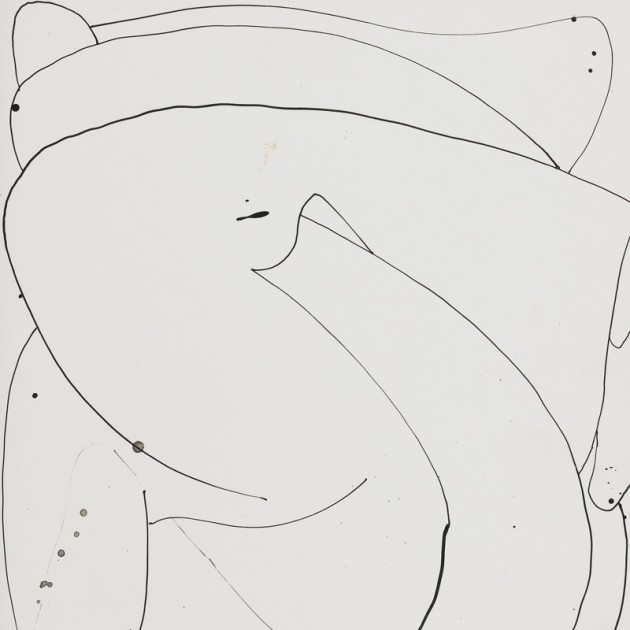Drawing, Dreaming and Desire: Works on Paper by Sam Francis
Drawing, Dreaming and Desire presents works on paper by Sam Francis (1923–1994) that explore the subjects of erotica and the female nude. Though the artist is renowned for his abstract, atmospheric and vigorously colored paintings on a grand scale, these intimate drawings—meditations made visible in pen and ink, acrylic and watercolor—resonate with significant moments in the artist’s biography and reveal another aspect of his creative energy. His highly spirited but little-known body of work, which ranges from line drawings of the 1950s to gestural brushstrokes of the 1980s, illuminates a deeply personal side of the artist’s creative oeuvre.
A native of California, Francis was drafted into the military in 1943 while still a student at University of California, Berkeley. During Army Air Corps training, he suffered a severe injury and was hospitalized for four years, a bitter blow for the young man. This trauma marked a turning point with regard to his vocation, however. In the midst of his confinement, Francis took up painting and quickly realized he had a passion and talent for it.
After his years of convalescence, Francis departed for Paris in 1950. At age 27, he was ready to experience life at its fullest, in a new culture, while finding his way as an artist. The vibrant, sensual colors of French art, palpable in the work of Monet and Matisse, stimulated his own predilection for bright, intense colors. A joie de vivre emanates from his erotic drawings of the mid-1950s. The figures, shown in sexual embrace, float in the space of the paper, akin to the islands of color that occupy his paintings. Evident from the works’ calligraphic character is Francis’s early interest in Japanese art and aesthetics, specifically makura-e, or “pillow pictures,” which he is known to have collected. Examples of this genre are included in the exhibit.
By the end of the decade, Francis had become the first American postwar painter to win serious acclaim in Europe. Courted by major dealers, collectors and museum curators, he was exhibiting his work on two continents and in four countries. In 1958 he completed the monumental triptych known as the Basel Mural for the Kunsthalle in Basel, Switzerland (one panel and two fragments from a second panel are on view in the Museum galleries). But illness struck Francis again in 1961, necessitating his hospitalization for most of the year in Bern, Switzerland. Perhaps the amorous couples that Francis drew while he was bedridden suggest the weight of this new setback. In contrast to the nimble figures of the 1950s, their massive forms hover between abstraction and figuration and swell to the edges of the paper as though struggling against its bonds.
The colossal energy that suffuses the artist’s abstract paintings informs his frank depictions of the female nude from the 1980s. During these productive years in California (where he would marry his fifth wife and welcome a son), he employed the brush with a strength and vigor matched by his new passion for creating monotypes. The pigment trickles and twists across the paper. Splashes of paint confirm the physicality of the artist wielding his brush. The generative, sensual impulse found in his paintings invigorates these drawings and offers reason enough for their existence.
Francis once said that “each painting is like my body print, taken at different moments of my life.” This sentiment is germane to the works displayed in Drawing, Dreaming and Desire, which, because of their intimate nature, provide insight into his psyche. His sustained attention to line, its descriptive and decorative power, offers a counterbalance to his abstractions, an aesthetic release for an artist whose public acclaim centered on the diffused surfaces of his bold abstractions.

